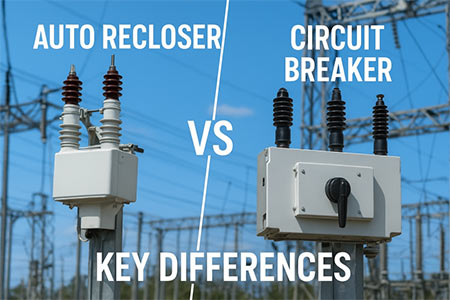In modern power distribution networks, both auto reclosers and circuit breakers play essential roles in maintaining system stability and reliability. While they share the common goal of protecting electrical systems from faults, their functions and applications differ in important ways. Understanding these differences is key for engineers and procurement professionals seeking optimal performance and cost-efficiency.
An auto recloser is an intelligent device designed to automatically detect, isolate, and restore power after temporary faults—such as lightning strikes or momentary line contacts. Its built-in control and communication capabilities make it ideal for smart grid and remote monitoring applications. By reducing outage time and improving service continuity, auto reclosers are increasingly favored in distribution automation systems and renewable energy networks.

A circuit breaker, on the other hand, primarily provides overcurrent and short-circuit protection. It operates once to interrupt a fault but requires manual or external control to reclose. While circuit breakers are essential in substations and industrial switchgear, they lack the self-restoring functionality of auto reclosers, which makes the latter more suitable for distributed and rural grid applications.
From a cost perspective, auto reclosers generally involve a higher initial investment due to their control systems and communication modules. However, the long-term operational savings—through fewer manual interventions and reduced outage durations—often justify the cost in modern smart grid projects.
Putai offers high-quality auto recloser solutions built for reliability and adaptability across different voltage levels. Our products integrate advanced control units and robust insulation systems, ensuring consistent performance under diverse environmental conditions.